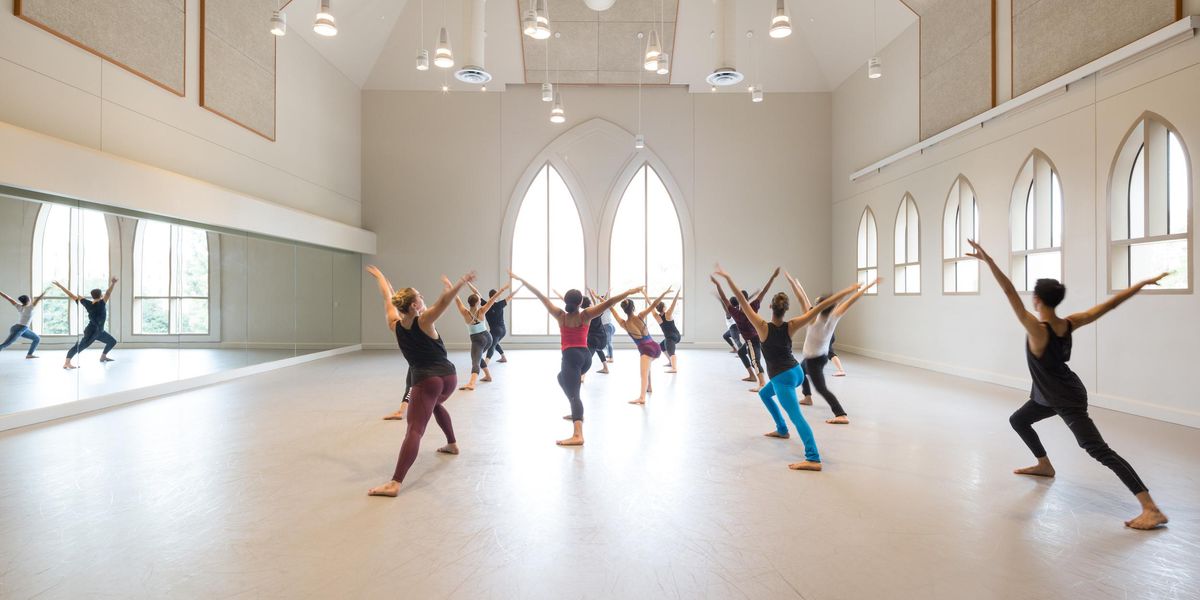Evidence, A Dance Company
The Joyce Theater
New York, NY
July 9–14, 2012
Performance reviewed: July 9
Ronald K. Brown’s Gatekeepers (1999) could stand as an iconic piece for his acclaimed Evidence, A Dance Company—as if almost every dance he’s made were not, in its way, iconic. To me, Brown’s oeuvre forms a seamless fabric spanning at least 27 years, less a collection of discrete works than a consistent philosophy in motion, set to music. It’s evidence.
Blessed with a sharp eye for form and talent in everything from ballet to West African dance, from Caribbean dance to hip-hop, the Tony Award winner (for The Gershwins’ Porgy and Bess) also has had the good fortune to bring along dancers who could “go there” for him. I’m remembering past Evidence superstars like Shani Nwando Ikerioha Collins, Camille A. Brown, and Keon Thoulouis who could mix it all up and serve up something indescribably fresh. Today, Brown still has his stalwart Arcell Cabuag, the Bessie winner with the true grit and funk of the old days. But, as evinced in Gatekeepers, which opened the first of two repertory programs, the choreographer now leads dancers who deliver his familiar vocabulary and style with discipline, memorable more for smooth team work than individual distinction.
Maresa D’Amore Morrison, Clarice Young, and Arcell Cabuag in
Gatekeepers
Photo by Ayodele Casel, Courtesy Evidence
Launching Gatekeepers, set to the aurally translucent layers of music by Wunmi and inspired by something characteristically metaphysical and ancestral, the dancers stir and clear space. Finely crafted, half-angelic “wings” scoop, fling, pump, claw, plow, or sickle while their feet twirl them in one direction after another and sidle into a typically sensual groove that can ripple the entire body. I observe, once again, how Brown works his dancers up in this way even though they’re basically often rooted in one place, locked into a line, pivoting around or fluttering out from a magnetic axis. When he does release them to space, the men’s moves can be pleasingly spongey; the women, springy—all still cool, controlled.
Calibrating Brown’s phrasing, in which movement spools out like silky or sulky poetic musings alternating with thrilling outbursts, the dancers have mastered a demanding musical timing that’s critical to Brown’s impact on audiences. They also look nothing like ballet or modern or postmodern or jazz or even Ailey dancers. They bring a way of the body to the concert stage that audiences read, and embrace, as real, sourced in something folks recognize.
So that leads us to On Earth Together/Everybody at the Table, a recently updated work based on original recordings and live cover versions of Stevie Wonder songs. “Living for the City,” “As,” “Higher Ground,” and six other tunes are offered in either literal, obvious “New York, just as I pictured it” dance scenarios—with Trayvon Martin hoodies thrown in—or unshaped, random boogie-ing among friends. Having worn out my copies of Wonder’s Innervisions and Songs in the Key of Life, I can’t help but love much of On Earth Together. But I’m not impressed. If too much of what your dancers are doing onstage merely matches what I was doing in front of my bedroom mirror way back when, well…
Arcelle Cabuag and Annique Roberts in
On Earth Together/Everybody at the Table
Photo by Ayodele Casel, Courtesy Evidence
I was looking for a little more choreography—not unreasonably, I think—but my attention kept straying to Chris Rob’s five-piece band and the lineup of several vocalists of varying strengths. Trevon Davis—guesting from The Gershwins’ Porgy and Bess on opening night—possesses a voice that, at times, closely resembles Wonder’s and won many hearts. I no longer want the Stevie Wonder jukebox musical I used to clamor for. Just give me those old albums or, failing that, Mr. Davis at the mic, please. Thank you.
Pictured at top: Ronald K. Brown and Annique Roberts
in On Earth Together/Everybody at the Table
Photo by Ayodele Casel, Courtesy Evidence




